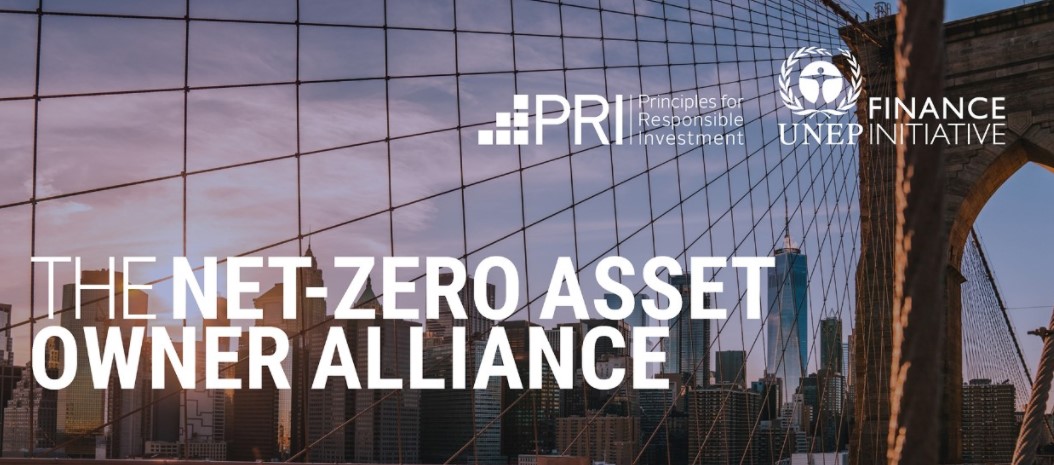Los márgenes netos del S&P 500 se recuperan y ayudan a los BPA del cuarto trimestre a superar el máximo de 2019
El margen de beneficio neto del S&P 500 sigue siendo cíclico: disminuyó considerablemente en todas las recesiones anteriores y en la última, inducida por la pandemia, no fue una excepción. En esta ocasión, no obstante, el margen neto repuntó en apenas un par de trimestres tras el fin de la recesión, mientras que normalmente se necesitaron tres o más años para que los márgenes se recuperaran hasta los máximos del ciclo anterior. El margen neto del S&P 500 que no se rige por los principios de contabilidad generalmente aceptados (no PCGA) disminuyó desde un máximo del 12,2% en el segundo trimestre de 2018 hasta el 9% en el segundo trimestre de 2020, y luego rebotó hasta el 11,9% en el cuarto trimestre de 2020. Este rápido repunte, con un crecimiento interanual de los ingresos del 1,2%, contribuyó a situar los beneficios por acción (BPA) del S&P 500 del cuarto trimestre de 2020 en nuevos máximos, a pesar de que los beneficios nulos en energía e industria siguen estando un tercio por debajo del nivel del cuarto trimestre de 2019. El principal impulsor de este extraordinario rebote de los márgenes fue el desplazamiento de los ingresos del S&P 500 hacia el sector tecnológico de alto margen, que alcanzó su propio margen récord del 24%.
Por sectores, 7 de 11 alcanzaron nuevos máximos históricos de margen de beneficio neto no PCGA en el tercer o cuarto trimestre de 2020: tecnología, sanidad, servicios de comunicación, productos básicos de consumo, servicios públicos, financieros y materiales. Los cinco primeros sectores son los grupos identificados como jóvenes y sanos de esta pandemia, en gran medida inmunes o beneficiarios netos. Los márgenes y los BPA del cuarto trimestre de los sectores de materiales y financiero también subieron en términos interanuales, ya que los mercados de capitales se comportaron bien y las grandes liberaciones de reservas para pérdidas por préstamos impulsaron los márgenes netos de los bancos.
Los márgenes del S&P 500 son cíclicos, pero no presentan reversión a la media
Aunque no estamos seguros de cuál es el margen neto exacto y sostenible a largo plazo del S&P 500, durante mucho tiempo hemos opinado que la expansión del margen neto del S&P 500 desde mediados de la década de 1990, a través de múltiples ciclos, se debe a razones estructurales. Las dos más significativas son la tecnología y los impuestos. El crecimiento de los negocios tecnológicos y digitales de alto margen del S&P 500, tanto en Estados Unidos como en el extranjero, impulsó los márgenes del índice. El tipo impositivo efectivo del S&P 500 se redujo al duplicarse sus beneficios en el extranjero desde mediados de la década de 1990 dado que los tipos impositivos en el extranjero son más bajos; y posteriormente, en 2018, se redujo el tipo impositivo de las empresas en Estados Unidos. El desapalancamiento y la bajada de los tipos de interés también supusieron un menor impulso a los márgenes de beneficio neto a lo largo de las décadas. Por tanto, aunque las perspectivas de los márgenes netos dependerán en parte de los tipos impositivos estadounidenses y extranjeros, así como del uso de la deuda y los tipos de interés – un mayor endeudamiento tiende a reducir los márgenes netos, pero impulsa los BPA -, es la combinación de los ingresos totales del S&P 500 por sectores la que más probablemente determinará los márgenes netos. En vista de la composición actual del índice y de lo que prevemos en el futuro, creemos que los márgenes netos del S&P 500 probablemente se mantendrán por encima del 10% excepto cuando se produzcan recesiones a largo plazo.
Es importante tener en cuenta que, a pesar de que los márgenes netos del S&P 500 han aumentado desde mediados de los noventa, su rentabilidad sobre el capital está en línea con los niveles registrados a mediados y finales de esa década, en la franja “high teens”. La mayoría de las empresas digitales tienen enormes bases de capital tangible e intangible, lo que significa que sus márgenes, a menudo muy elevados, no siempre aportan un retorno del capital inusualmente alto. En el caso de las empresas orientadas a los activos intangibles, es difícil medir el capital económico de base existente, y en particular el valor de ser el innovador que sobrevive. Entre las empresas orientadas a los activos físicos o las empresas consolidadas y muy competitivas, pensamos que los bajos tipos de interés actuales ejercerán cierta presión sobre los beneficios y el rendimiento del capital a lo largo del tiempo como consecuencia de unos costes de capital más reducidos que los históricos.
¿Hacia dónde se dirige el dólar estadounidense? El PIB frente a los diferenciales de los tipos de interés reales
Los argumentos sobre la debilidad del dólar en los últimos meses, ligados a la preocupación que suscita la inflación tras la recuperación, contrastan ahora con otras perspectivas que identifican un dólar más sólido gracias a una recuperación más acelerada en Estados Unidos que en Europa. Los grandes estímulos fiscales en Estados Unidos conllevan un riesgo moderado de inflación a medio plazo, algo que probablemente merezca la pena a fin de tener más posibilidades de experimentar un crecimiento robusto durante el inicio de ciclo. Dudamos, no obstante, que el crecimiento o la inflación de Estados Unidos vayan a ser lo suficientemente elevados como para que la Reserva Federal suba los tipos en 2022 ni, probablemente, en 2023. Por tanto, parece demasiado precipitado que se considere al dólar como una divisa con mejores tipos de interés reales que el euro o el yen, a pesar del mayor crecimiento del PIB estadounidense. Sin un tipo de interés real superior en el horizonte, no estamos seguros de que el dólar deba apreciarse mucho frente al euro, salvo que se produzca una fuga hacia activos de menor riesgo. Si la inflación estadounidense se dispara por un estímulo demasiado grande o mal dirigido, el euro podría subir; si Europa entra en una década sin crecimiento, el euro podría debilitarse. Nuestras estimaciones de BPA del S&P 500 presuponen que el euro se situará entre 1,15 y 1,20 dólares en 2021, y en torno a 1,15 dólares en 2022.
BPA del S&P 500: en 2021, de 170 a 175 dólares; en 2022, de 185 a 191 dólares
Elevamos nuestras estimaciones de BPA del S&P 500 para 2021 y 2022, y aumentamos nuestra estimación de BPA normalizada del S&P 500 para 2021 de 178 dólares a 183 dólares. El aumento de nuestras estimaciones de BPA es de 2 dólares en tecnología/comunicaciones, 2 dólares en el sector financiero y 1 dólar en el sector sanitario. Estimamos el valor razonable del S&P 500 basándonos en el BPA normalizado y asignamos una relación precio-beneficio de 22, asumiendo que los tipos de interés reales a largo plazo acabarán alcanzando el 0%. Esperamos que el S&P 500 alcance los 4.100 a finales de marzo de 2022 y los 4.200 a finales de 2022.
For institutional investors only. Further distribution of this material is strictly prohibited. For institutional investor use and registered representative use only. Not for public viewing or distribution. Past performance is not a reliable indicator of future returns. Forecasts are based on assumptions, estimates, views and hypothetical models or analyses, which might prove inaccurate or incorrect.
DWS and FundsSociety are not affiliated.
Important risk information
Alternative investments may be speculative and involve significant risks including illiquidity, heightened potential for loss and lack of transparency. Alternatives are not suitable for all clients. This information is subject to change at any time, based upon economic, market and other considerations and should not be construed as a recommendation. Past performance is not indicative of future returns. Forecasts are based on assumptions, estimates, opinions and hypothetical models that may prove to be incorrect.Investments are subject to various risks, including market fluctuations, regulatory change, possible delays in repayment and loss of income and principal invested. The value of investments can fall as well as rise and you may not recover the amount originally invested at any point in time. Furthermore, substantial fluctuations of the value of the investment are possible even over short periods of time.
This publication contains forward looking statements. Forward looking statements include, but are not limited to assumptions, estimates, projections, opinions, models and hypothetical performance analysis. The forward looking statements expressed constitute the author’s judgment as of the date of this material. Forward looking statements involve significant elements of subjective judgments and analyses and changes thereto and/or consideration of different or additional factors could have a material impact on the results indicated. Therefore, actual results may vary, perhaps materially, from the results contained herein. No representation or warranty is made by DWS as to the reasonableness or completeness of such forward looking statements or to any other financial information contained herein.
War, terrorism, economic uncertainty, trade disputes, public health crises (including the recent pandemic spread of the novel coronavirus) and related geopolitical events could lead to increased market volatility, disruption to U.S. and world economies and markets and may have significant adverse effects on the fund and its investments.
The brand DWS represents DWS Group GmbH & Co. KGaA and any of its subsidiaries such as DWS Distributors, Inc. which offers investment products or Deutsche Investment Management Americas Inc. and RREEF America L.L.C. which offer advisory services.
Certain DWS investment products and services may not be available in every region or country for legal or other reasons, and information about these products or services is not directed to those investors residing or located in any such region or country.
The material was prepared without regard to the specific objectives, financial situation or needs of any particular person who may receive it. It is intended for informational purposes only and it is not intended that it be relied on to make any investment decision. It is for professional investors only. It does not constitute investment advice or a recommendation or an offer or solicitation and is not the basis for any contract to purchase or sell any security or other instrument, or for
DWS and its affiliates to enter into or arrange any type of transaction as a consequence of any information contained herein.
Investments are subject to various risks, including market fluctuations, regulatory change, possible delays in repayment and loss of income and principal invested. The value of investments can fall as well as rise and may not recover the amount originally invested at any point in time. Furthermore, substantial fluctuations of the value of the investment are possible even over short periods of time.
DWS and its affiliates do not provide accounting, tax or legal advice and investors should consult their own advisors with respect to their particular circumstances.
For investors in Peru / Argentina / Chile: Without limitation, this document does not constitute an offer, an invitation to offer or a recommendation to enter into any transaction neither does it constitute the offer of securities or funds. The offer of any services and/or securities or funds will be subject to appropriate local legislation and regulation.
Additional disclaimer for Chile: This private offer commences on current date and it avails itself of the General Regulation No. 336 of the Superintendence of Securities and Insurances, currently the Financial Markets Commission. This offer relates to securities not registered with the Securities Registry or the Registry of Foreign Securities of the Commission for the Financial Markets Commission, and therefore such shares are not subject to oversight by the latter. Being unregistered securities, there is no obligation on the issuer to provide public information in Chile regarding such securities; and these securities may not be subject to a public offer until they are registered in the corresponding Securities Registry.
La presente oferta privada toma vigencia el date y está sujeta al Reglamento General No. 336 de la Superintendencia de Valores y Seguros (SVS), conocida como la Comisión de Mercados Financieros (CMF). Esta oferta cubre aquellos instrumentos que no están registrados en el Registro de Valores o Registro de Valores Extranjeros de la Comisión de Mercados Financieros (CMF), por lo tanto, dichas acciones no están sujetas bajo la supervisión de la CMF. Debido a que no están registrados, el emisor no tiene la obligación de proporcionar información sobre dichos instrumentos en Chile, los mismos no pueden ser ofrecidos bajo una oferta pública hasta que estén registrados en el Registro de Valores que corresponde.
Additional disclaimer for Peru: The Products have not been registered before the Superintendencia del Mercado de Valores (SMV) and are being placed by means of a private offer. SMV has not reviewed the information provided to the investor. This Prospectus is only for the exclusive use of institutional investors in Peru and is not for public distribution
For investors in Argentina: Without limitation, this document does not constitute an offer, an invitation to offer or a recommendation to enter into any transaction neither does it constitute the offer of securities or funds. The offer of any services and/or securities or funds will be subject to appropriate local legislation and regulation.
For investors in Mexico: The funds have not been and will not be registered with the National Registry of Securities, maintained by the Mexican National Banking Commission and, as a result, may not be offered or sold publicly in Mexico. The fund and any underwriter or purchaser may offer and sell the funds in Mexico, to institutional and Accredited Investors, on a private placement basis, pursuant to Article 8 of the Mexican Securities Market Law.
Without limitation, this document does not constitute an offer, an invitation to offer or a recommendation to enter into any transaction neither does it constitute the offer of securities or funds. The offer of any services and/or securities or funds will be subject to appropriate local legislation and regulation.
For investors in Uruguay: The sale of the [Products] qualifies as a private placement pursuant to section 2 of Uruguayan law 18,627. The Products must not be offered or sold to the public in Uruguay, except in circumstances which do not constitute a public offering or distribution under Uruguayan laws and regulations. The [Products] are not and will not be registered with the Financial Services Superintendency of the Central Bank of Uruguay.
For investors in Brazil: The shares in the Fund may not be offered or sold to the public in Brazil. Accordingly, the shares in the Fund have not been nor will be registered with the Brazilian Securities Commission – CVM nor have they been submitted to the foregoing agency for approval. Documents relating to the shares in the Fund, as well as the information contained therein, may not be supplied to the public in Brazil, as the offering of shares in the Fund is not a public offering of securities in Brazil, nor used in connection with any offer or subscription or sale of securities to the public in Brazil.
© 2021 DWS Group GmbH & Co. KGaA. All rights reserved. I-081714-1





